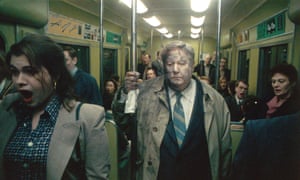Toronto film festival 2015 - First look review
Victoria review: one shot, two hours, total triumph
5 / 5 stars
http://www.theguardian.com/film/2015/sep/10/victoria-review-one-shot-two-hours-total-triumph
Sebastian Schipper’s extraordinary thriller is no mere stunt but an immersive experience whose gripping performances and technical innovation make it hard to shake
‘Inarguably a stunt, Victoria still manages to overwhelm in ways that few films do’
Nigel M Smith
Shot over two hours in a single, dazzling take, Victoria is one of the year’s most impressive technical achievements – but it’s more than mere gimmick.
The German film - which first screened at the Berlin film festival where it won the Silver Bear for Cinematography – signals actor-turned-director Sebastian Schipper as a major talent behind the lens. Victoria is a huge logistical and artistic gamble; one which pays off astonishingly.
The film begins in the vein of a neon-lit Gaspar Noe film, with the film’s titular heroine (played by the fiercely talented Laia Costa), dancing in an underground Berlin club to a throbbing techno beat. It’s an intoxicating kickoff to a film whose second act swiftly descends into hell.
After leaving the club in the wee hours of the morning to work at a local cafe, Victoria runs into a pack of young men, who seem intent on wooing her. The best-looking of the group, Sonne (Frederick Lau), succeeds, and Victoria to drop her prior plans to drink with them on a nearby rooftop.
Given the real-time factor of the project, the initial meet-and-greet between Victoria and the men meanders a little, as not much happens. But that makes the payoff all the sweeter when Victoria and Sonne eventually embrace following an intimate exchange.
Their burgeoning romance is put on hold as Sonne and his friends are ordered to meet with a professional gangster to whom they owe a huge debt. Victoria unwisely accompanies them to the underground parking lot, where the men are tasked with robbing a bank to repay Andi. Victoria, in way over her head, agrees to act as driver.
It’s here, past the one-hour mark, that Victoria goes full-throttle to morph into a breakneck, high-stakes heist thriller; it doesn’t let up until its final, mournful reel.
The tracking shot: film-making magic - or stylistic self-indulgence?
Read more
Shot continuously for over two hours in 22 locations, from 4:30am onwards, Victoria asks a lot of its cast, who improvised all of the dialogue based on a bare-bones script. They all tear into the experiment with abandon. Costa, especially, is remarkable: going from carefree to shellshocked over the course of one life-altering morning, she doesn’t strike a false note, serving as the eyes and ears of the audience on the hellish journey. She also lends the project enormous heart, particularly when the devastating conclusion comes into play.
Despite the strong performances, it’s Schipper’s single-shot conceit - and the fact that he and his team pulled it off with aplomb - that makes Victoria such a bracing triumph. While the entire enterprise is inarguably a stunt, Victoria manages to overwhelm in ways that few films do.
It’s fitting that Schipper breaks convention in the end credits to lead with cinematographer, Sturla Brandth Grøvlen, in place of his name. His incredibly fluid work never distracts - it only immerses.
domingo, 13 de setembro de 2015
Roy Andersson: ‘I’m trying to show what it’s like to be human’
A Pigeon Sat on a Branch Reflecting on Existence
Roy Andersson: ‘I’m trying to show what it’s like to be human’
The Swedish director, whose film A Pigeon Sat on a Branch Reflecting on Existence premieres at Venice next week, mourns society’s breakdown – and explains why he sees himself as a bird
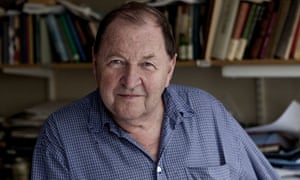
Roy Andersson: ‘I’m one for solidarity, for a society where one shares.’
From the outside, Studio 24 looks like a normal, neutral Stockholm townhouse. Step inside, however, and you enter the world of Roy Andersson, one of the most distinctive film directors working today, a master of long-take, left-field comedy, a humane advocate of the virtues of the absurd. Village Voice branded him the “slapstick Bergman”; his singular mix of bleak and bawdy has won him fans who, despite decades between movies, stay loyal.
The ground floor of Studio 24 is a vast space in which are shot almost all his films’ scenes – most of which are static, intricate tableaux. For the first time in four years, the space is almost empty, cleared of the debris and props featured in his latest film, A Pigeon Sat on a Branch Reflecting on Existence. Just a pile of shoes remains.
The film team review A Pigeon Sat on a Branch Reflecting on Existence
When I visit, it is just before the news that Pigeon will not, as had been widely expected, premiere at Cannes. “It’s a shame that we keep failing to make it in time,” Andersson says. “We sent the scenes in two different orders, but we still haven’t heard from them. If they cannot see the value of what they received, then there is no point of being in Cannes anyway. I’m not mourning at all. Hopefully, we will make it to Venice instead.” His hopes were realised: the film premieres on the Lido next week.
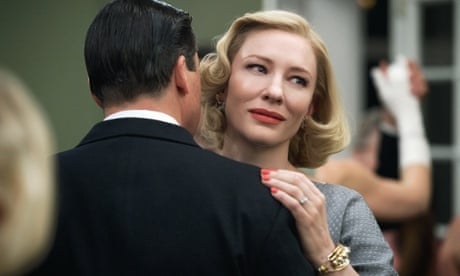
Sign up to our Film Today email
Read more
Andersson climbs the squeaky staircase that leads to his office and newly installed cinema. He is 71 now, and almost two decades have passed since he started work on his best-known film, Songs from the Second Floor, which was released in 2000, and seven from the release of You, The Living. In total he has made five feature films, starting with A Swedish Love Story in 1970, then Giliap (1975), and is the author of two books. He finances his films by making commercials – so far, he has made about 400 of them. His mission statement remains the same, whatever the year, whatever the medium. He wants to give a voice to “the small human being … [who] symbolises all of us. I’m trying to show what it’s like to be human and to be alive.” It is an aim at once modest and enormous.
From the outside, Studio 24 looks like a normal, neutral Stockholm townhouse. Step inside, however, and you enter the world of Roy Andersson, one of the most distinctive film directors working today, a master of long-take, left-field comedy, a humane advocate of the virtues of the absurd. Village Voice branded him the “slapstick Bergman”; his singular mix of bleak and bawdy has won him fans who, despite decades between movies, stay loyal.
The ground floor of Studio 24 is a vast space in which are shot almost all his films’ scenes – most of which are static, intricate tableaux. For the first time in four years, the space is almost empty, cleared of the debris and props featured in his latest film, A Pigeon Sat on a Branch Reflecting on Existence. Just a pile of shoes remains.
The film team review A Pigeon Sat on a Branch Reflecting on Existence
When I visit, it is just before the news that Pigeon will not, as had been widely expected, premiere at Cannes. “It’s a shame that we keep failing to make it in time,” Andersson says. “We sent the scenes in two different orders, but we still haven’t heard from them. If they cannot see the value of what they received, then there is no point of being in Cannes anyway. I’m not mourning at all. Hopefully, we will make it to Venice instead.” His hopes were realised: the film premieres on the Lido next week.

Sign up to our Film Today email
Read more
Andersson climbs the squeaky staircase that leads to his office and newly installed cinema. He is 71 now, and almost two decades have passed since he started work on his best-known film, Songs from the Second Floor, which was released in 2000, and seven from the release of You, The Living. In total he has made five feature films, starting with A Swedish Love Story in 1970, then Giliap (1975), and is the author of two books. He finances his films by making commercials – so far, he has made about 400 of them. His mission statement remains the same, whatever the year, whatever the medium. He wants to give a voice to “the small human being … [who] symbolises all of us. I’m trying to show what it’s like to be human and to be alive.” It is an aim at once modest and enormous.
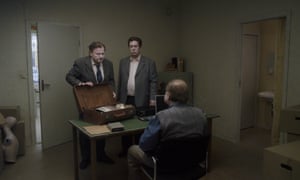
A scene from A Pigeon Sat on a Branch Reflecting on Existence. PR
As with all his work, Pigeon operates in the gap between pain and laughter. The initial scenes show three everyday encounters with death. A man dies of a heart attack trying to uncork a bottle of wine while his wife is distracted by the sound of an electric mixer. Three siblings visit their ailing mother in hospital, the eldest upset that she is still clutching her bag, which is full of jewellery. In the third, a man lies dead on the floor of a ferry cafeteria as the crew worry about how to divvy up the food he has ordered.
Behind the mordancy, there is a deeper message. “I’m one for solidarity,” says Andersson. “A society where one shares, and feels responsibility towards others. Unfortunately, we’ve had a period where to look after one another is seen as old-fashioned. This is the path Sweden has taken politically. But it’s evident that it hasn’t worked out. It is a painful insight, which I think people will start to realise more and more. Not least [current Swedish prime minister] Fredrik Reinfeldt.”
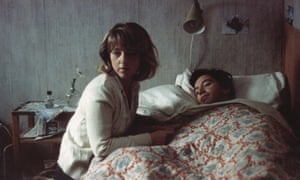
A scene from Andersson’s 1975 feature film, Giliap. PR
For such a surrealist, Andersson makes movies rooted in real life, which often riff irreverently on history. A Pigeon is no exception. One of its scenes includes a message to Swedish mining and smelting company Boliden, which sold thousands of tonnes of smelting residue to Chile in the 1980s, only to face a lawsuit claiming hundreds of people, including children who played on the waste sites, had been poisoned. In the film, people are led into a huge copper cylinder, made by Boliden. “But we didn’t use their typography,” says Andersson. He sighs. “They just keep saying business is business. Morally it doesn’t make sense. The world can’t go on like that.”
During our meeting, Andersson flicks through books stacked all over the room. He is forever referencing an author or a painter – Matisse, James Ensor, Otto Dix, George Grosz, Camus, Stig Dagerman, Hjalmar Söderberg, Balzac and Dostoevsky – restless to verify quotes. It is not just his distinctive aesthetic that bears the hallmarks of this education, but also his stripped-back, oil-black dialogue. As a child, he says, he wanted to be an author, despite being “raised in a family that was not intellectual at all”.
The personal and the universal are inseparable in his work; this latest may be more clearly autobiographical than most. One scene has sailors exchanging vodka for kisses with a singing waitress. It is, he says, a tribute to growing up in Gothenburg. “Working-class kids, including me, were taken to the seaside by the city of Gothenburg where we received a bun and milk. It meant a lot to me.” Such gestures instilled in Andersson a keen sense of civic responsibility that he wants to share through his films. “I’m trying to show we have to care for the little we have left. I want to show the vulnerability, and the weakness we carry,” he says.
Songs from the Second Floor, released in 2000, is perhaps Andersson’s best-known film. PR
All the locations in Pigeon, like those in his previous films, feel familiar, yet unrecognisable. There is something askew about that pub, something uncanny about that living room. “I’ve come to realise that I can’t shoot real environments. I prefer a hyperreality,” he says. This is achieved by hand-building each set in the space below us, and using trompe l’oeil. “It looks real but it’s purified and condensed. I’m fascinated by how life’s grandness, smallness and mortality appear much clearer this way.” This quest for authenticity means that Andersson works primarily with non-professional actors, people he spots out and about, at the petrol station or in a bar. “There might be 10,000 professional actors in Sweden, meaning that the choice is far larger in real life. I’m looking for something people have never seen before.”
Contrary to rumour, this will not be his last film, he says. “I feel like I can’t stop filming.” Nor can he stop trying to convey his message to the world, observing its madnesses, offering a commentary. “It’s me thinking about existence. I project myself as a pigeon.”
Fonte: www.theguardian.com/film/2014/aug/28/roy-andersson-pigeon-sat-branch-reflecting-existence
http://www.theguardian.com/film/2014/sep/02/a-pigeon-sat-on-a-branch-reflecting-on-existence-review-roy-andersson-venice-film-festival
All the locations in Pigeon, like those in his previous films, feel familiar, yet unrecognisable. There is something askew about that pub, something uncanny about that living room. “I’ve come to realise that I can’t shoot real environments. I prefer a hyperreality,” he says. This is achieved by hand-building each set in the space below us, and using trompe l’oeil. “It looks real but it’s purified and condensed. I’m fascinated by how life’s grandness, smallness and mortality appear much clearer this way.” This quest for authenticity means that Andersson works primarily with non-professional actors, people he spots out and about, at the petrol station or in a bar. “There might be 10,000 professional actors in Sweden, meaning that the choice is far larger in real life. I’m looking for something people have never seen before.”
Contrary to rumour, this will not be his last film, he says. “I feel like I can’t stop filming.” Nor can he stop trying to convey his message to the world, observing its madnesses, offering a commentary. “It’s me thinking about existence. I project myself as a pigeon.”
Fonte: www.theguardian.com/film/2014/aug/28/roy-andersson-pigeon-sat-branch-reflecting-existence
http://www.theguardian.com/film/2014/sep/02/a-pigeon-sat-on-a-branch-reflecting-on-existence-review-roy-andersson-venice-film-festival
Assinar:
Postagens (Atom)
